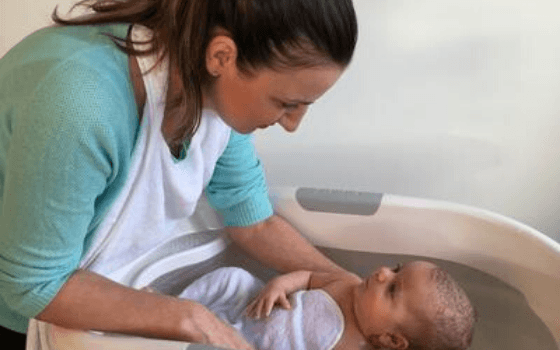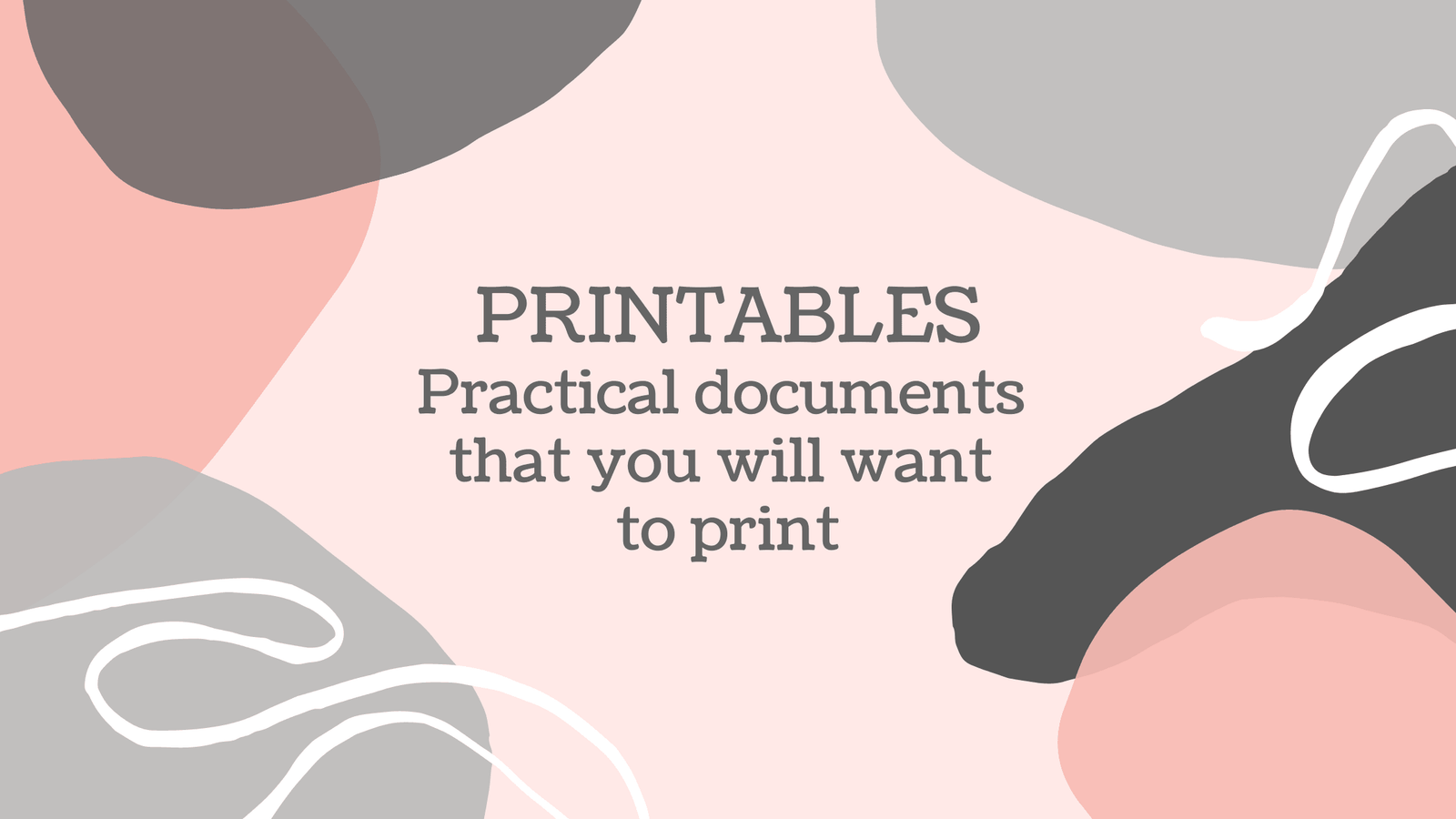Bathing a Newborn: Your Questions Answered

When to start bathing a newborn?
It is generally recommended to wait until your newborn baby's cord stump falls off, usually between 10 days and 3 weeks, before putting them in the bath. During this time you can give your baby a sponge bath on a change table or mat.
How to give a sponge bath?
1. Wrap your newborn in a towel with only their singlet and nappy on.
2. Using a bowl of warm water dab some cotton wool and wipe your baby's eyes from inside to outside. Make sure the cotton wool is not too wet and use a new cotton wool each time to avoid spreading infection or stickiness from one eye to the other. Wipe around your baby's nose and ears, ensuring you don't put anything in them and over their face/chin and then clean creases in their neck, drying each area as you go.
3. Keep your baby warmly wrapped, taking one limb out at a time and wiping creases and in between fingers and toes, drying each limb before putting it back under towel.
4. Once completed take off your baby's nappy and clean their genitals and bottom, carefully drying once you've finished. If you get the cord stump wet, pat it dry.
5. Put a clean nappy and singlet on and dress your baby. Use a brush/comb to brush your baby's hair. Even if they only have a small amount of hair, it will help them to get used to it and may help with avoiding or lessening cradle cap.
Where to bath your newborn?
Once the umbilical cord stump comes off, your baby can move to the sink or baby bath. We used a baby bath and stand in the kitchen because it made sense for us; close to water, more space, etc. Whichever room of the house you choose, ensure that it is warm, safe and comfortable for you and your baby before undressing them.
When is the best time?
The simple answer is any time that suits you. When you are feeling relaxed and will enjoy the experience with your baby is ideal as it can become a time of day that you switch off and bond with your little one. Alternatively, it might be an activity that you choose to do with your partner. Either way, it is best to avoid times when your baby is tired or hungry or immediately after a feed as it may unsettle their little tummies🤢
If your baby enjoys bath time, you can use it as a way to relax and settle your baby before bed time.
How often should I bathe a newborn?
Newborns don't really get dirty so bathing them 2-3 times a week is enough for their newborn skin. In between baths, you can give them a 'top and tail wash' to ensure they are clean. This involves focusing on the areas that need a wash, cleaning their hands and face/neck with some warm water and cotton wool and their genitals and bottom with a washcloth should be enough in between baths (see sponge bath section above for more detail).
If you and your baby enjoy bath time you can bath your baby every day but it is not recommended to bath them more than once a day because it can dry out their sensitive skin.
How long should they stay in the bath?
Bathing a newborn takes more time in the preparation than the actual bath itself, 5-10 minutes is enough to get your newborn clean and give them some time to get used to this new experience.
Step by step guide to bathing a newborn
1. Get everything you need before filling the bath or sink, especially if you have older children. This may include cotton wool, oil/lotion, wash cloth and a towel. Avoid soap at this early age as it will dry out the baby's skin. We used a drop of olive oil in the bath with our kids when they were babies and it kept their skin nice and moist (I know it's generally used for salad but this one came from my grandma, can you tell I'm Greek?😊).
2. Eliminate distractions; TV, phone etc and take your jewellery/watch off
3. Position the bath somewhere safe, on a stand/bench/table, then fill it with enough water to cover your baby's tummy, it should be around 5cm. Make sure to check the water temperature with a thermometer or with your wrist or elbow. If the water feels hot, it is most likely too hot for your baby, the water should be warm to touch. The ideal water temperature for a baby is between 37 and 38 degrees.
Please note: If using the sink, run cold water through the tap once you have filled the sink to avoid burns to you or your baby from touching the tap and don't add extra water while your baby is in the bath.
4. Get your baby undressed and wrap them in a towel. Use cotton wool with warm water to wipe their eyes and face at the change table or while holding them over the bath (more likely if you have help). Wipe eyelids from inner eye to outer eye, using clean wool for each eye and then wipe their face. Do not put anything into their ears or nose.
5. Take your baby's nappy off and take them over to the bath. Gently cradling your baby with one arm and supporting their head and neck with your other arm, lower them into the water, holding them and supporting their neck at all times. You can use a bath aide for extra support or a wash cloth at the bottom of the bath to make it softer. The back of your baby's head should be submerged with their ears and face out of the water at all times.
Tip: If you're worried about losing your grip, you can line the bath with a towel to make it easier to hold on to.
6. Use the wash cloth over your baby's body to gently splash water on them and keep them warm.
7. Wash your baby with the wash cloth, cleaning in between their fingers and toes and body creases and lastly their bottom and genitals. Pay attention to hands and feet and in between fingers and toes and the folds of their neck, arms and behind their knees. If your baby was blessed with a head of hair, wash it at the end of the bath so they aren't sitting in the soap
Please note: It is never ok to leave your baby in the bath alone, even with a bath seat or cradle. Take your baby out of the bath immediately if you become distracted
8. Once you have finished washing your baby, gently cradle them and get a towel or pick them up and bring them straight out on to you if you have one of our Hands Free Baby Bath Towels
9. Take your baby to the change table and dry them, taking care to dry in between their fingers and toes, under their chin, behind their ears and under their arm pits and neck and groin creases
10. Dress your baby, starting with their nappy (you'll soon find out why, especially if you have a boy😉) and put them in a safe place while you empty the bath water
What should I do if my baby becomes distressed during bath time?
Some babies love bath time from the very beginning, for others it can be quite distressing. If you're baby is not enjoying bath time they may find it relaxing if you talk to them about what you're doing or sing to them while you're undressing them and giving them a bath. You can also try placing your hand on their tummy to make them feel safe and secure. For some newborns it is just a matter of time, it may take them longer to become comfortable with this new experience. Rest assured it will get easier with time and your baby will be splashing and enjoying the water in no time🌊
Can I give my new baby a shower?
Once your baby's umbilical stump has fallen off, it is ok to enjoy a shower with your baby. Be sure to keep baby's face away from running water and use warm water rather than hot water.
I hope this has answered all of your questions about bathing your newborn baby. Please feel free to write a comment below or email me directly pamela@towellingstories.com if you have any questions or would like more information on any of the points listed above.
Happy bath time😘
Pam xx
Sources: www.raisingchildren.net.au , www.pampers.com
Leave a comment
Comments will be approved before showing up.
Also in The Practical Parent

Trust your gut: It's called motherly instinct for a reason
Two years ago my son woke with what I believed was a swollen cheek. He was 17 months old, so I assumed that it might have been related to teething.
We went about our normal day...I still didn't feel right about it so I called our GP and booked an appointment for that day. They weren't sure what had happened but mentioned that although unlikely, he may have had a stroke and that we should go to the hospital.

Burping a Newborn: Why, When, How and What if...?
Burping your baby can be a lovely opportunity to bond but it can also be a very frustrating experience if your newborn is unsettled. Be patient as you learn what your baby needs and likes and what makes them feel better and remember that every baby is different so something that may work for one baby may not work for another.



Pamela Mercer
Author